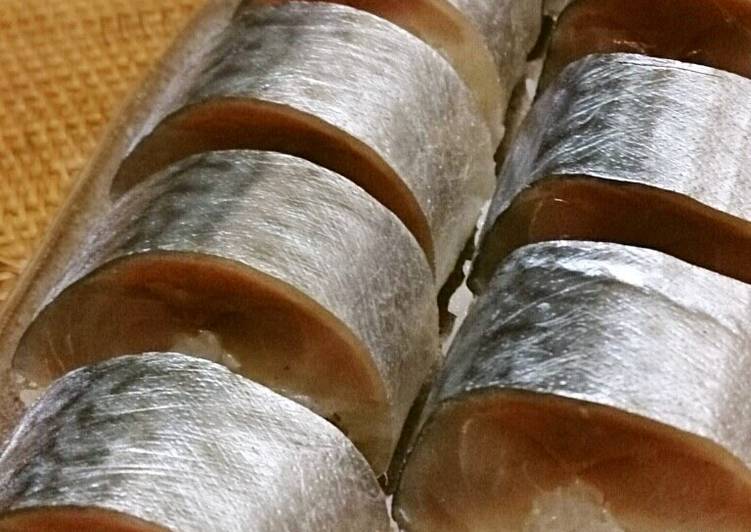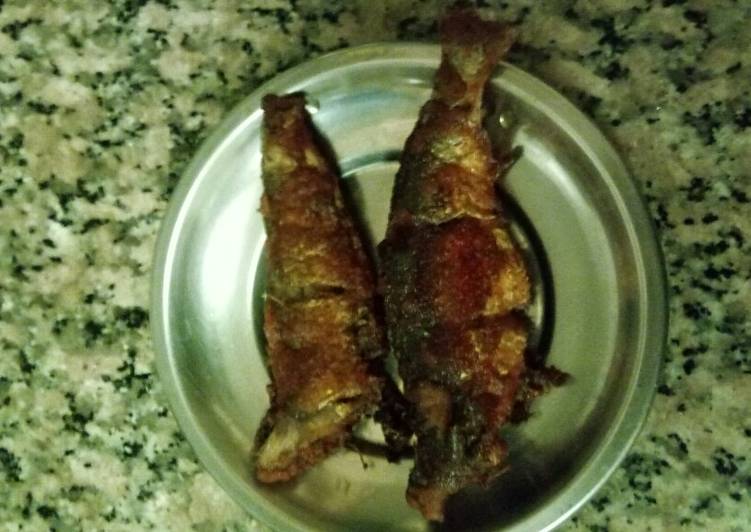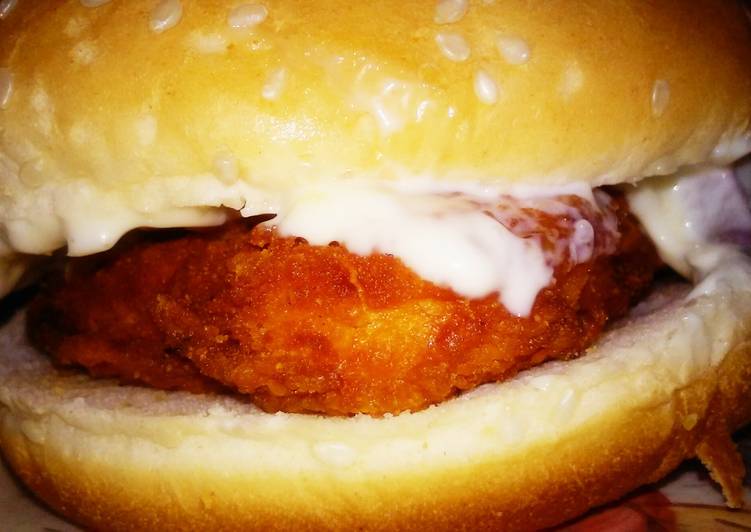
Hey everyone, I hope you are having an incredible day today. Today, I’m gonna show you how to prepare a distinctive dish, saba sushi (cured and pressed mackerel sushi). It is one of my favorites food recipes. For mine, I will make it a bit unique. This will be really delicious.
The common preparation of shime-saba (cured and marinated in vinegar) was a staple technique of the time. Mackerel Pressed Sushi consists of vinegar cured mackerel, shiso leaves, and sushi rice. You may have seen fancier pressed sushi with multiple layers of sushi rice, seafood, and other ingredients.
Saba Sushi (Cured and Pressed Mackerel Sushi) is one of the most favored of recent trending meals in the world. It is easy, it’s fast, it tastes yummy. It’s enjoyed by millions daily. They are nice and they look wonderful. Saba Sushi (Cured and Pressed Mackerel Sushi) is something which I have loved my whole life.
To begin with this recipe, we have to first prepare a few components. You can have saba sushi (cured and pressed mackerel sushi) using 6 ingredients and 12 steps. Here is how you cook that.
The ingredients needed to make Saba Sushi (Cured and Pressed Mackerel Sushi):
- Make ready 1 fish's worth Fresh mackerel (filleted)
- Get 4 tbsp Sugar
- Prepare 4 tbsp Salt
- Prepare 5 tbsp Rice vinegar
- Prepare 350 grams Hot cooked rice
- Get 3 tbsp Sushi vinegar
When I order sushi at the counter of a traditional sushi restaurant, I always end up ordering. Create a homemade sushi platter with this marinated mackerel recipe. The cured mackerel is simply seasoned with toasted white sesame seeds and fresh chives. Shime Saba is Japanese Marinated Mackerel.
Steps to make Saba Sushi (Cured and Pressed Mackerel Sushi):
- Rub both sides of the fish fillets with sugar, place in a shallow tray, cover with plastic wrap and refrigerate for 2 hours.
- Rinse off both sides of the fillets under running water, and pat dry with paper towels. Rub salt into both sides, place in a shallow tray, cover with plastic wrap and refrigerate for 3 hours.
- Rinse off both sides of the fillets under running water, and pat dry with paper towels.
- Pour the vinegar into the shallow tray with the fillets placed skin side down. Place a paper towel on top of the fish so that they are immersed in the vinegar. Cover with plastic wrap and refrigerate for 4 hours.
- Peel off the skin with your fingers.
- Remove any remaining bones with fish bone tweezers.
- Wipe off the vinegar well with paper towels.
- Wrap the fillets in plastic wrap, and refrigerate for half a day.
- Mix sushi vinegar into freshly cooked hot rice using a rice paddle. Fan to cool it down. (I have added some pickled ginger and toasted sesame seeds to the rice here).
- Slice off a bit of the fish in the middle that is thicker than the rest, and stick it on to the tail end to even out the thickness.
- Line a makisu (sushi rolling mat) with plastic wrap, and place a mackerel fillet on it skin side down. Cover evenly with sushi rice, and roll with the mat.
- Press down with your hands to even out the shape. Secure the mat with elastic bands, leave for 2 to 3 hours and it's done.
Mackerel is very popular fish in Japan. With this cooking method, Saba (Mackerel) can be kept a little longer and also we can enjoy Sashimi like So yeah, it's shime-saba nigirizushi, or cured mackerel hand-pressed sushi, slapped between two buns. Place the sushi rice onto the shime saba and distribute. Add in the tororo kombu, thin long flakes of dried kombu seaweed softened in vinegar before Flip the bento box and remove the pressed sushi. Wet the blade of a knife thoroughly.
So that is going to wrap this up with this exceptional food saba sushi (cured and pressed mackerel sushi) recipe. Thanks so much for your time. I’m sure you will make this at home. There is gonna be interesting food at home recipes coming up. Don’t forget to save this page in your browser, and share it to your loved ones, friends and colleague. Thank you for reading. Go on get cooking!


